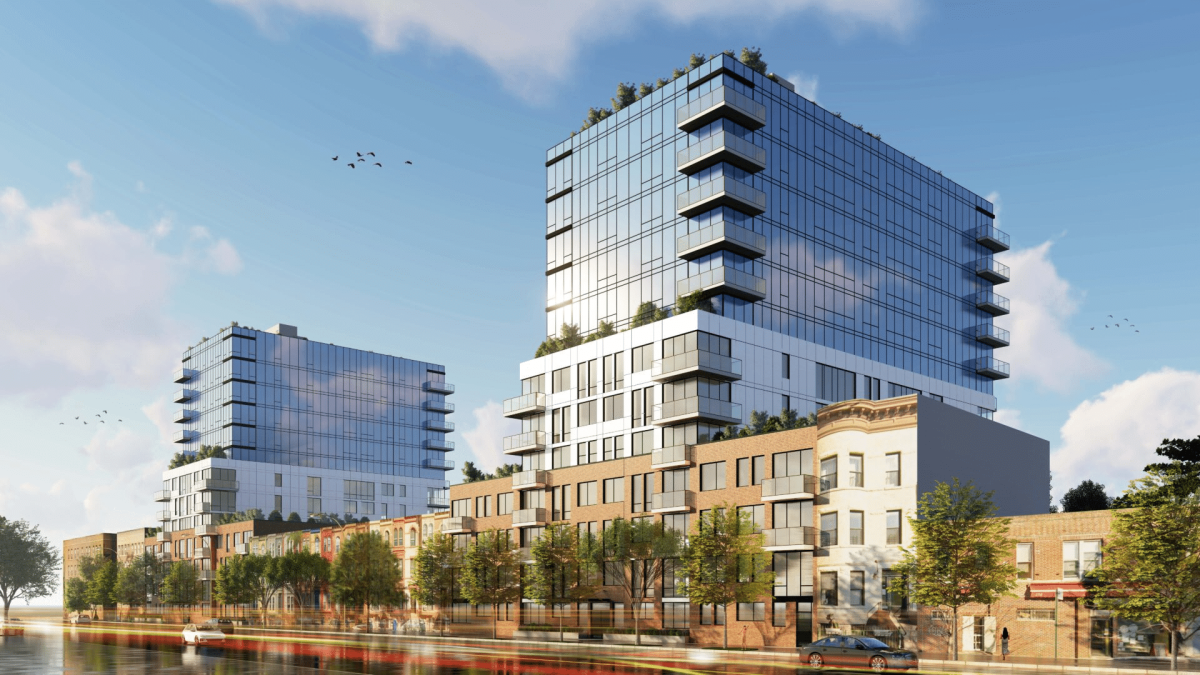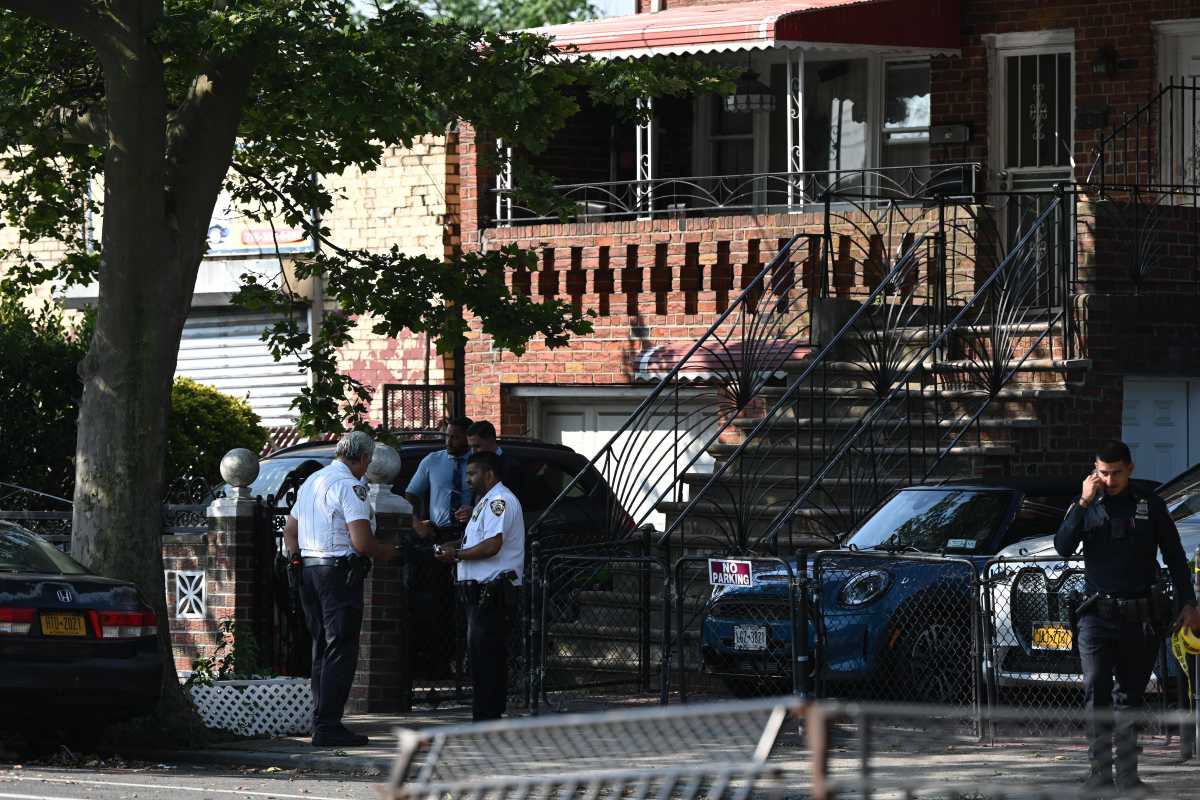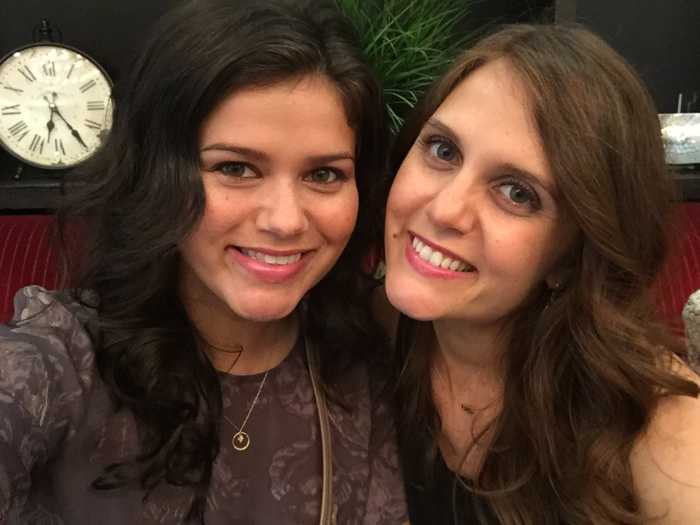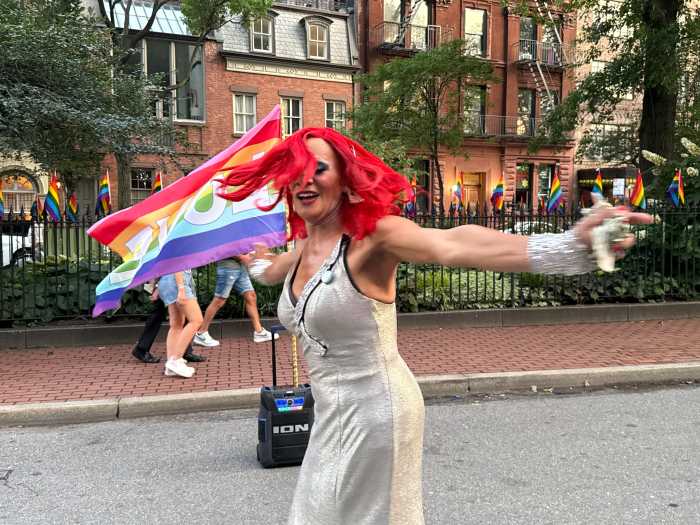After more than a year of packed hearings and heated debates, which spotlighted tensions about how to proceed with development in Brooklyn and beyond, a compromise has been reached on the proposed Arrow Linen rezoning in Park Slope.
The new deal, announced Wednesday at two City Council committee meetings, will likely result in the development of two 10-story largely residential buildings and a greater number of rent-regulated apartments than typically required at 467 Prospect Avenue. That is down from the two at least 13-story buildings initially proposed and the standard number of affordable units required by law.
The City Council’s Subcommittee on Zoning and Franchises and Committee on Land Use voted unanimously to approve the rezoning, which now includes a zoning change to R7A for the commercial site and a legal building commitment from the developers to stick to 10 stories, local Council Member Shahana Hanif said. Hanif called the new proposal “a triumph for the Windsor Terrace community.”
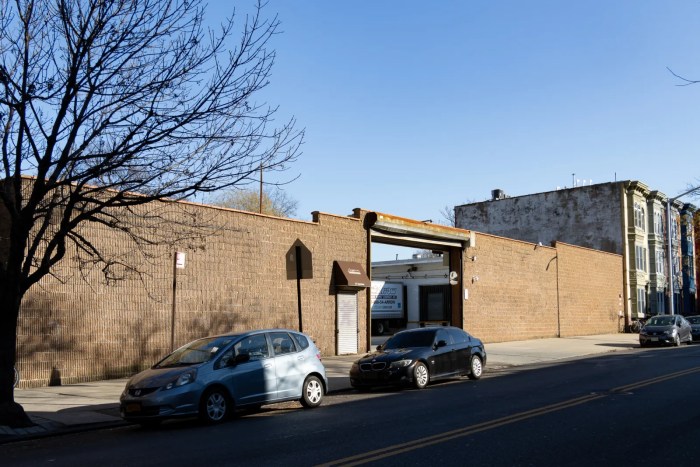
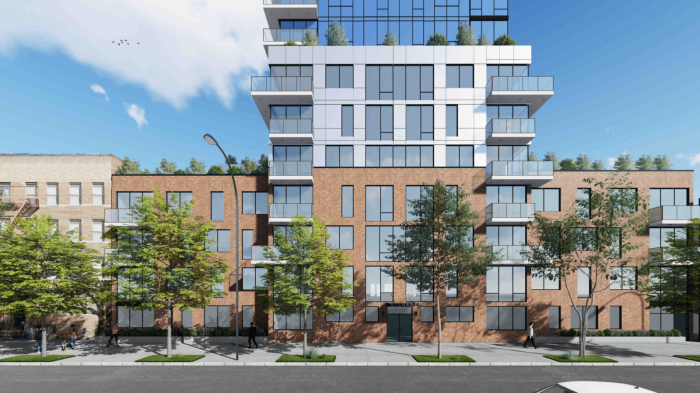
The deal also includes increasing the number of affordable units from 25-40%t of the total apartments in the complex, and keeping those units affordable to families earning an average of 60% of Area Median Income. More than half of those units, Hanif said, would be two- and three-bedroom apartments. “We all know that the city is in a housing crisis that is caused in large part by a shortage of affordable housing units,” Hanif said.
“We have an opportunity to create 100 new affordable units, and do so without constructing super tall buildings that would disrupt the character of the neighborhood,” she said, adding the project set “a strong standard for community-driven and affordability focused land use policy” following the passage of City of Yes.
“Thanks to a new bulkier design, we were able to secure this height reduction without impacting the total count of 250 units. This is a win-win modification that makes the project more contextual in Windsor Terrace without undermining affordability goals,” she said.
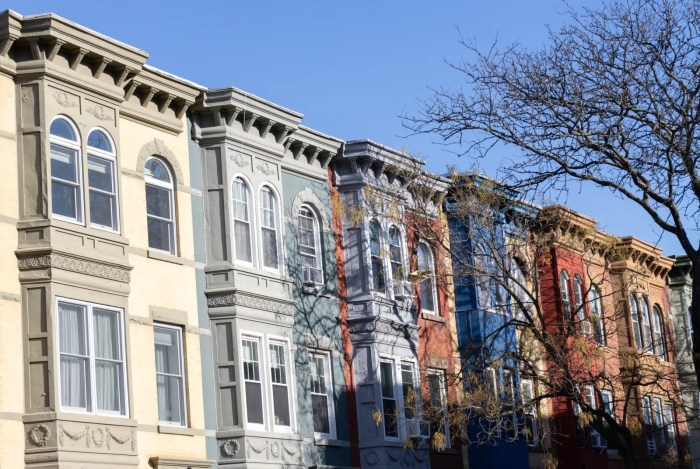
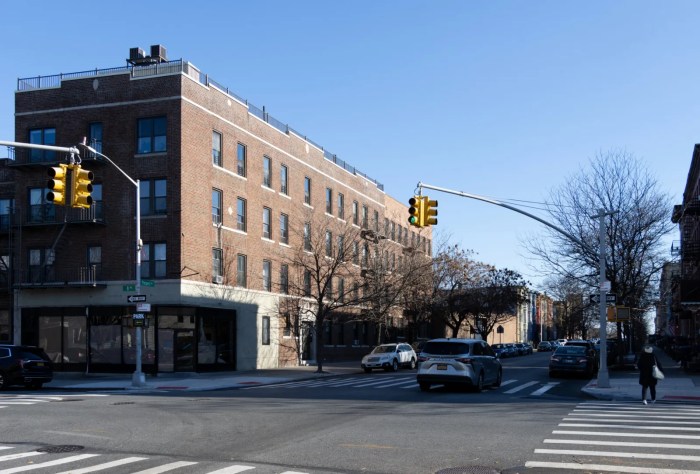
Other modifications in the proposal include providing subsidized community space for a local organization that serves South Asian survivors of domestic violence and a childcare center run by a local provider, which will be included in the community benefits agreement.
The Arrow Linen team will create a construction task force to provide accountability throughout development and will work with union 32BJ to create local jobs, Hanif said. The development will also be required to include a green roof, as well as other flood mitigation efforts.
The community benefits agreement is between the Arrow Linen team and local organization the Fifth Avenue Committee, Hanif said.
Additionally, the homes located within the U-shape of the Arrow Linen rezoning site and the rent-stabilized building on the corner of Prospect and 8th avenues will have an R6B zoning designation. This will help “mitigate concerns raised by neighbors about these buildings being subject to potential future speculation, while also requiring MIH affordability,” Hanif said, referring to the city’s Mandatory Inclusionary Housing program.
She thanked local advocacy group Housing Not Highrises, which was formed in response to the project, as well as other local community members for their input throughout the ULURP process.
“The project before the committee today is stronger because of your engagement. I’m proud to support this critical project, which, if approved, will provide desperately needed affordable housing in Windsor Terrace.”
Housing Not Highrises is pleased with the increased affordability in the new proposal, member Jack Walsh told Brooklyn Paper’s sister site Brownstoner. However, the group is concerned about the new zoning and the possibility of increased height in the area, as well as the community benefits agreement not being enforced.

“We have always been advocating for deeper affordability at the Arrow Linen site. However, we made it very clear to Council Member Hanif that we had come to what we saw as the middle on a nine-story building and anything above that would result in our organization organizing against her in the primary,” he said.
At issue, he said, is that the proposed zoning allows for an 11-story building and the community benefits agreement only binds Arrow Linen, not any developer that it may sell the site to “for many tens of millions.”
A rep for Arrow Linen, Michael Woloz, told Brownstoner in a statement that the development team is “very pleased” to get the council committees’ support for the new proposal, and said the new number of affordable units—100 compared to the 61 previously pitched—is likely “one of the highest non-subsidized MIH affordable housing commitments under Speaker Adams’ tenure.”
“We were very pleased to be able to accommodate an extraordinary increase in affordable units, which was by far the most unifying and consistent thread among residents and housing activists that spoke at one of the many community board hearings on this project,” Woloz said. He also credited the development team with lowering the building height without losing units.
“We are very excited about this project as it will enable our neighbors to access affordable housing for the first time in generations and allow our thriving unionized business to relocate to a more suitable industrial location, preferably elsewhere in the borough of Brooklyn where we have operated since 1947.”
The council committee votes mark some of the final steps of an extremely contentious ULURP process that started with a proposal put forward by Arrow Linen for two at least 13-story buildings rising on the site of the longtime commercial laundry with around 244 units and at least 61 (25%) affordable to households earning an average of 60% of Area Median Income.
Arrow Linen had asked for the u-shaped site – and the privately owned townhouses it surrounds – to be converted from R5A to R7-1 zoning, allowing for taller residential buildings to be developed on the already residential-zoned land.
From the start, the proposal was met by fierce backlash from locals who called for proportional and contextual development, rather than high-rises that could set precedent for the neighborhood and beyond, resulting in the formation of the now more than 2,000-member Housing Not Highrises group.
Throughout the ULURP process and the public hearings it involved, Housing Not Highrises squared off with pro-development advocates, including many from Open New York, about how to balance developers’ requests to build with local visions for neighborhood planning, and how those tied in with housing affordability and gentrification. At times, the name-calling got vicious.
Both Hanif and Borough President Antonio Reynoso signaled support for the project during the process, but both said they wanted to see more affordability and investigations into massing, most recently at the public hearing of the Subcommittee on Zoning and Franchises on January 9. At the hearing, 35 people spoke against the proposal and 33 in support, but the majority, including Hanif, signaled that affordable housing in the area is of paramount importance.
Following Wednesday’s votes, the rezoning proposal will go to the full City Council for a vote, before it finally hits the mayor’s desk.
This story first appeared on Brooklyn Paper’s sister site Brownstoner


